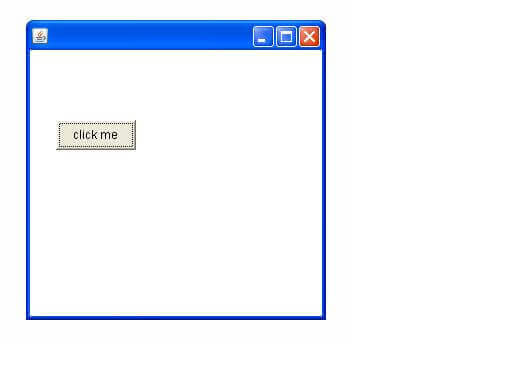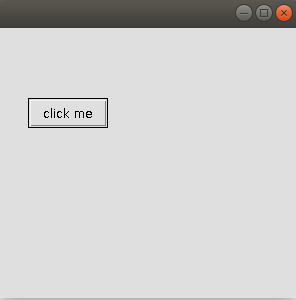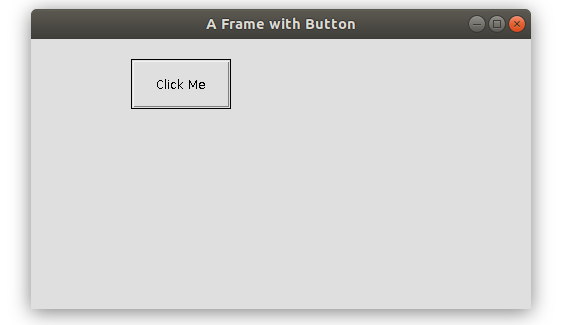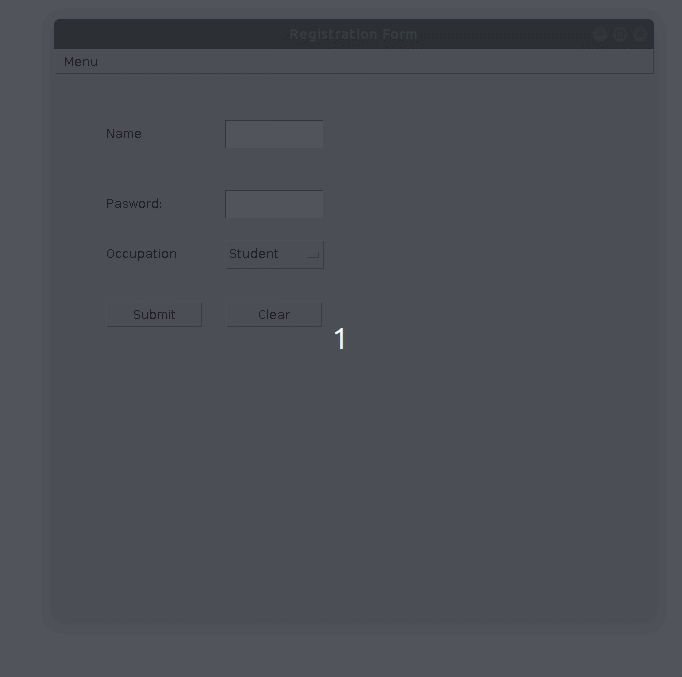
Open-Source Internship opportunity by OpenGenus for programmers. Apply now.
Abstract Window Toolkit(AWT) is an to create GUI using JAVA for Window based applications.It is said to be platform dependent as it implements itself over the underlying Operating System.Thus,it uses the native components like the windows,panels,dialog and whatever you see on the GUI of your Operating System.It calls the platforms subroutines to implement the functionalities.Depending on the Operating System(platform)the UI will be different from OS to OS.For Example you can see below that the same program rendered different UI on different platforms .
We have covered the basics by building a form UI using Abstract Window Toolkit (AWT) in Java.
On Windows XP

On Ubuntu 18.04

If you'd see above images the look and feel of both of them is entirely like the native application and depends on the platform it is being run.
Structure
Lets get into the structure of the AWT.

If you'd see the images shown previously (Windows XP and Ubuntu) on observing closely you will notice that there exists a conatainer(which has the close,maximize and minimize button on top-right) that is composed of several elements like buttons,text-box etc.These elements are called components.Container can be defined as a special type of component that is superset of all the other constituting components.As shown in the figure above Button,Label,Checkbox,Choice,Scrollbar are also the components.We won't go much into theoretical concepts instead we will focus on understanding the functionality and practical implementation of AWT.
Lets get ourselves familiar with some special containers that we would be using in future
- Window: It implements a top level window container for GUI implmentation and has no borders or menubar.
- Panel: It is used for holding other components and does not have any title bar, menu bar or border.
- Frame: It is sub-window component which contains other elemental components like title bar,textfield,button,label etc.
Some basic functions/attributes:
Before moving on to develop a frame we should learn about some basic functions/methods and attributes that we would utilize to develop our GUI.
Let obj be an identifier for a component object.
-
obj.setBounds(int x-coordinate,int y-coordinate,int width ,int height)
Usage: Used to set components position on screen and its dimensions
Example:
//Creating a button component
Button bt=new Button("Click Me");
// setting button position and dimension on screen
bt.setBounds(50,50,50,50);
-
obj.setSize(int width,int height)
Usage: Used to set frame dimensions.
Example:
//Creating a new frame
Frame fr=new Frame("My Frame");
//Setting frame dimensions
fr.setSize(400, 400);
-
obj.setVisible(boolean arg);
Usage: used to set the component visible(arg=true) i.e render the component on screen or to hide the component(arg=false).
Example:
import java.awt.*;
public class example extends Frame{
//Constructor that accepts title for frame
example(String frame_title){
//Instantiating a frame using frame class
Frame fr=new Frame(frame_title);
//Setting frame Dimensions
fr.setSize(500, 300);
//Making frame visible
fr.setVisible(true);
}
public static void main(String args[])
{
//creating a frame and passing a title
example fr = new example("Example Frame"); //String frame_tile="Example Frame"
}
}
Output on Ubuntu 18.04

-
obj.add(Object component);
Usage: used to add a component to another component.The component being added becomes a sub-component and the one to which it is being added becomes the parent container for this component.
Example:
import java.awt.*;
public class example extends Frame{
//Constructor that takes Frame Title as arguement
example(String frame_title){
//Instantiating a frame
Frame fr=new Frame(frame_title);
//Setting Frame width and height
fr.setSize(500,300);
//Instantiating a Button
Button bt=new Button("Click Me");
// setting button position on screen
bt.setBounds(100,50,100,50);
//adding button into frame
fr.add(bt);
//Setting no Layouts
fr.setLayout(null);
//Making the Frame Visible
fr.setVisible(true);
}
public static void main(String args[]){
// Creating the instance of Frame
example frame = new example("A Frame with Button");
}
}
Output on Ubnutu 18.04

To understand more we'll see an example!!
Example: A registration Form
Suppose we want to create a registration form and handle the input as well.
Our final output would be something similar to this:

Also here we would require an Event Listener that would keep track of our input and submit actions.We will use ActionListenerfor that.
So let's dive into the code. The explanations wherever neccessary have been added into the code itself using comments.
//Registration Form using AWT
/*To Compile: javac awt.java
To run: java Main
*/
import java.awt.*;
import java.awt.event.*;
public class registration_form implements ActionListener{
TextField t = new TextField();
TextField t1 = new TextField();
Choice c = new Choice();
Label submit = new Label("Registration Successful");
Frame f = new Frame();
MenuBar mb = new MenuBar();
Menu m = new Menu("Menu");
Label l = new Label("Name");
Label l1 = new Label("Pasword: ");
Label l2 = new Label("Occupation");
Button s = new Button("Submit");
Button clr = new Button("Clear");
//Constructor that will create the form
registration_form(){
//Frame Layout
f.setSize(600,600);
f.setVisible(true);
f.setLayout(null);
f.setTitle("Registration Form");
//End of Layout
//Menu
m.add("File");
m.add("Edit");
mb.add(m);
f.setMenuBar(mb);
//End of Menu
//First Row : Name and TextField for name
l.setBounds(50,100, 100,30);
f.add(l);
t.setBounds(170,100, 100,30);
f.add(t);
//End of row 1
//row 2
l1.setBounds(50,170, 100,30);
//We'll display * for every char entered in password field
t1.setEchoChar('*');
t1.setBounds(170,170, 100,30);
f.add(l1);
f.add(t1);
//End of row 2
//Choice Row 3
l2.setBounds(50,220, 100,30);
c.add("Student");
c.add("Employee");
c.add("Business");
c.setBounds(170,220, 100,30);
f.add(l2);
f.add(c);
//End of Choice row
s.setBounds(50,280, 100,30);
// We will add functionality to the button
s.addActionListener(this);
clr.setBounds(170,280,100,30);
clr.addActionListener(this);
f.add(s);
f.add(clr);
submit.setBounds(50,330, 300,30);
f.add(submit);
submit.setVisible(false);
}
//Handles events
public void actionPerformed(ActionEvent e){
//If Submit Button Pressed
if (e.getSource() == s){
submit.setVisible(true);
submit.setText("Name ="+t.getText() +" Occupation ="+c.getSelectedItem());
}
//If Clear Button Pressed
else{
//Incase of exception
t.setText(" ");
t.setText("");
t1.setText(" ");
t1.setText("");
//Selects the first option of choice on clearing screen
c.select(0); /
submit.setVisible(false);
}
}
}
class Main{
public static void main(String Z[]){
registration_form reg = new registration_form();
}
}
- Source File name:
registration_form.java - Compile using
javac registration_form.java - Generated files(on compilation):
registration_form.classandMain.class - Run using
java Main
Conclusion
As AWT implements its GUI using the underlying Operating system,it's components become quite heavy.For example if you are creating a Button in AWT then you are actually asking OS to create a Button for you.Swing is another API that is popularly used because it is platform independent and light weight as well.The UI is independent of the Operating System.Not only is it lightweight but also it is more flexible and powerful.It offers advance features and components as well like lists,tables,combo box,slider etc.Thus,Swing has replaced AWT at most of the applications and uses.Nevertheless,AWT still finds its place where the look and feel of a native appliacation is concerned.
With this article at OpenGenus, you must have a good idea of using Abstract Window Toolkit (AWT) in Java by building a basic form. Enjoy.
